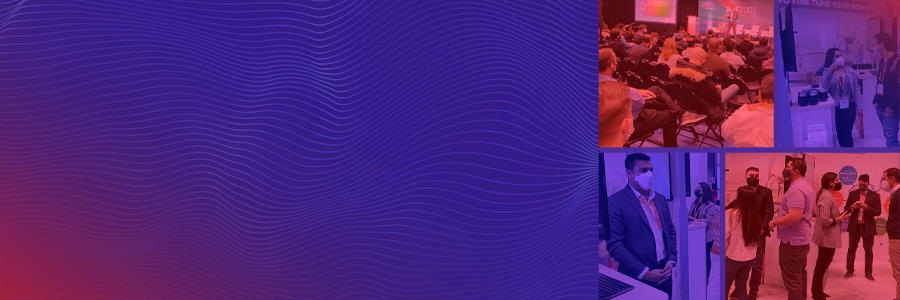
SOTI was back at NRF 2022, once again held at the Jacob K. Javits Center in New York City.
(Fun fact about the Javits Center: there are 6,000 bird-friendly panes of glass on its façade).
The theme behind this year’s edition of Retail’s Big Show was Accelerate, and when you consider how far and fast the industry has evolved since COVID-19 – and continues to evolve – it is a very apt concept.
Here are the highlights.
Pen-and-Paper Processes: Same Speed, New Risks
As far back as 2016, pen-and-paper processes to manage retail operations like inventory tracking or customer information was considered a relic of the past. There were just too many risks associated with it:
- Human error (data was either missed or captured incorrectly)
- Information was misunderstood, misinterpreted or lost completely
Not to mention, there are better, more productive ways for employees to spend time than manually documenting information for hours on end.
Fast forward to 2022 and while COVID-19 has accelerated the natural shift to e-commerce by five years, 55% of supply chain organizations (which play a great role in retail) still use pen-and-paper processes.
The speed of pen-and-paper hasn’t changed (it’s still slow), but new risks have evolved:
- Lack of visibility: Pen-and-paper processes lack the visibility and transparency needed by customers – 68% of who want to know at all times where their order is
- Out-of-stock dissatisfaction: Using pen-and-paper can lead to out of stock situations if inventory isn’t tracked properly which is a poor experience for 57% of customers
- Spoilage: With 60% of consumers buying groceries online since COVID-19, pen-and-paper can result in the expiration of perishable items such as milk, meat or produce
The Bottom Line
Be fast. Be accurate. Be efficient. Whether signing for a package, placing an order or getting information on their purchase, customers want speed which pen-and-paper cannot deliver. That slowness, combined with its inaccuracy and unreliability puts retailers at risk.
for further reading
Learn how to automate your pen-and-paper processes with SOTI SnapInsights into Device Health and Performance: No Longer a “Nice to Have”
In the first six months of the pandemic, the retail industry experienced three years’ worth of digital transformation. Some of the investments retailers made include electronic payment terminals, mobile point of sale (mPOS) devices and buy online, pickup in-store (BOPIS) solutions.
for further reading
The Technology Investment Retailers Must Make to Recover After COVID-19Collectively, global IT spending in the retail industry reached $193.2 billion USD in 2021 to attract new customers, retain existing customers and drive operational efficiency. But devices and technology can only do that if they’re online and productive.
The calculation is simple: if devices and technology don’t work, customers won’t buy.
The dilemma for retailers is how to keep an eye on scanners, tablets, smartphones, kiosks and other devices which can be scattered at different locations throughout the world, literally:
- Rely on employees to report device issues? That’s unlikely to happen as 85% of workers never report issues to IT
- In-person visits to check on devices? That seems wildly inefficient and, depending on the size of the business, pretty much impossible
- Hear from customers when devices like scanners fail to work? That’s just the worst possible outcome
In fact, 67% of all businesses – retailers included – need better tools to diagnose issues before they become a problem, such as:
- Battery health: Retail IT departments must predict when batteries will fail before it actually happens
- Poor cellular coverage: Determining if network carriers are delivering reliable coverage
- App usage: Knowing which apps are essential by way of usage, data consumption and other factors
The Bottom Line
Identify problems remotely. Resolve problems remotely. Retailers can no longer be reactive when it comes to device insights and performance. They must be proactive in ensuring the devices and technology they’ve invested in work as intended.
for further reading
SOTI XSight: Diagnostic Intelligence to Minimize Downtime & Maximize ROIPrinter Management: An Easy Way to Deliver Customer Satisfaction
Printer problems, whether it’s a paper jam, low ink levels or other malfunctions are a nuisance.
But in a retail operation, it can be catastrophic. One faulty printer can impact workflows, shipping times, product availability, safety, security, compliance and, of course, customer satisfaction.
At NRF, the prevailing thought about printers is that, well, nobody really thinks about them – until something goes wrong. Then it’s a scramble to locate the problematic printer, diagnose the issue and resolve it.
That scramble turns into a slog of a marathon. Consider an average scenario when one printer goes down:
- Time to dispatch service rep: 1 hour
- Time to collect data for the faulty printer: 25 minutes
- Time to diagnose and resolve the issue: 2 hours
That’s 3.5 hours to fix one printer. That’s 3.5 hours of packing labels, shipping labels, bills of lading, receipt confirmations or other critical documents not being printed. That’s 3.5 hours lost in the retail supply chain process.
Now multiply those numbers by 10, 20 or more.
The Bottom Line
Printer management can no longer be ignored. Retailers must have a central solution that allows for remotely troubleshooting printers along with other tasks such as upgrading firmware and configuring devices.
for further reading
Why Retailers Need A Better Printer Management SolutionHow to Create Personalized & Frictionless Experiences: POS Terminals & Kiosks
Taking time inside a store or aimlessly browsing with no real purchase intent are pursuits of the past. Today’s shopper wants to get in, get what they want and get out as quickly as they can.
Consider the following:
- Prior to the pandemic, the average trip to the grocery store took 41 minutes and the average shopper made 1.5 trips per week
- Since the pandemic, consumers have decreased the amount of time spent in grocery stores and purchase more trusted items they are familiar with
The frictionless experience removes the roadblocks customers face when shopping, such as searching for items, looking up prices or interacting with store associates. In the words of the Chairman of the NRF Board of Directors Mike George in his opening speech: “They want shopping to be quick and convenient….”
Consumers want a personalized shopping experience too. For example, perhaps they walk into a store, hold up a copy of their handwritten grocery list and a kiosk scans it, displays on a map where the items are, along with an expected total. After all, the second part of Mr. George’s quote above is “…but at the same time, more experiential, more social and more human.”
Technology will play a significant role in creating a personalized frictionless experience, so it’s no surprise that NRF 2022 hosted an ever-growing number of companies specializing in engagement through things like POS devices, digital kiosks and barcode scanners.
The Bottom Line
There’s no going back. Once consumers discover a faster, better and easier way of shopping, that becomes the norm. Retailers are realizing two things: Firstly, the overall importance of creating personalized and frictionless experiences. Secondly, investing in technology is the only way to deliver them.
for further reading
Learn More About Linux Management with SOTIWant to Know More About How SOTI Can Help Your Retail Operations? Here’s How!
- Contact us with your questions
- Request a free demo
- Try the SOTI ONE Platform free for 30 days
- Visit our retail industry page



